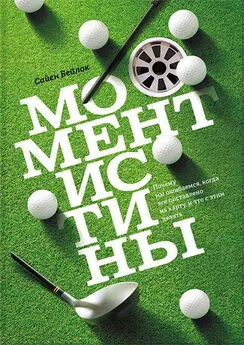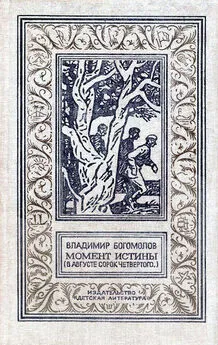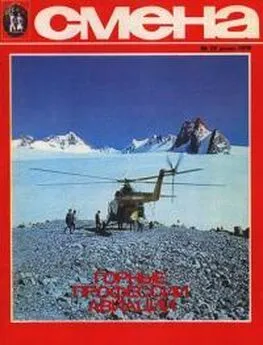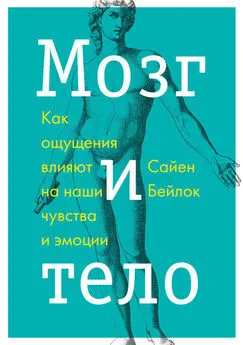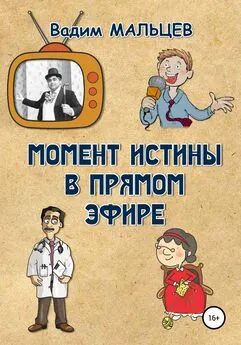Сайен Бейлок - Момент истины. Почему мы ошибаемся, когда все поставлено на карту, и что с этим делать?
- Название:Момент истины. Почему мы ошибаемся, когда все поставлено на карту, и что с этим делать?
- Автор:
- Жанр:
- Издательство:Манн, Иванов и Фербер
- Год:2015
- Город:Москва
- ISBN:978-5-00057-724-0
- Рейтинг:
- Избранное:Добавить в избранное
-
Отзывы:
-
Ваша оценка:
Сайен Бейлок - Момент истины. Почему мы ошибаемся, когда все поставлено на карту, и что с этим делать? краткое содержание
Момент истины. Почему мы ошибаемся, когда все поставлено на карту, и что с этим делать? - читать онлайн бесплатно полную версию (весь текст целиком)
Интервал:
Закладка:
127.National Science Foundation, Science and Engineering Indicators, 2006.
128.Women in science: The battle moves to the trenches // New York Times, 2006. December 19.
129.Cultivating Female Scientists, Spring 2008 // http://www.winchesterthurston.org.
130.The WISE program: http://www.gfs.org/academics/the-wise-program/index.aspx#1. Обратите внимание, что в данной программе участвуют как преподаватели-мужчины, так и преподаватели-женщины.
131.American Society for Cell Biology, Newsletter, 2004. Vol. 27. No. 7.
Глава 7
132.См.: Jackson R., Beilock S. L. Attention and performance // D. Farrow, J. Baker, C. MacMahon, eds. Developing Elite Sports Performers: Lessons from Theory and Practice. New York: Routledge, 2008. Pp. 104–118.
133.Дополнительно см.: Beilock S. L., Gray R. Why do athletes ‘choke’ under pressure? // G. Tenenbaum, R. C. Eklund, eds. Handbook of Sport Psychology, 3rd ed. Hoboken, N.J.: Wiley, 2007. Pp. 425–444.
134.Calvo-Merino B. et al. Action observation and acquired motor skills: An fmri study with expert dancers // Cerebral Cortex, 2005. Vol. 15. Pp. 1243–1249. См также: Calvo-Merino B. et al. Seeing or doing? Influence of visual and motor familiarity on action observation // Current Biology, 2006. Vol. 16. Pp. 1905–1910.
135.Calvo-Merino B., Glaser D. E., Grezes J. et al. Action observation and acquired motor skills: An FMRI study with expert dancers // Cerebral Cortex, 2005. Vol. 15. Pp. 1243–1249. Приводится с разрешения.
136.Yarrow K., Brown P., Krakauer J. W. Inside the brain of an elite athlete: The neural processes that support high achievement in sports // Nature Reviews Neuroscience, 2009. Vol. 10. Pp. 585–596. Зеркальные нейроны, изначально обнаруженные у макак, работают как во время выполнения человеком определенных задач, так и во время наблюдения за такими же действиями других лиц.
137.Baumeister R. E. Choking under pressure: Self-consciousness and paradoxical effects of incentives on skillful performance // Journal of Personality and Social Psychology, 1984. Vol. 46. Pp. 610–620. Обсуждение см.: Schlenker B. R. et al. Championship pressures: Choking or triumphing in one’s own territory? // Journal of Personality and Social Psychology, 1995. Vol. 68. Pp. 632–641; Baumeister R. E. Disputing the effects of championship pressures and home audiences // Journal of Personality and Social Psychology, 1995. Vol. 68. Pp. 644–648; Schlenker B. R., Phillips S. T., Boneicki K. A., Schlenker D. R. Where is the home choke? // Journal of Personality and Social Psychology, 1995. Vol. 68. Pp. 649–652.
138.Butler J. L., Baumeister R. F. The trouble with friendly faces: Skilled performance with a supportive audience // Journal of Personality and Social Psychology, 1998. Vol. 75. Pp. 1213–1230.
139.Jackson R., Beilock S. L. Attention and performance // D. Farrow, J. Baker, and C. MacMahon, eds. Developing Elite Sports Performers: Lessons from Theory and Practice. New York: Routledge, 2008. Pp. 104–118.
140.Beilock S. L., Carr T. H., MacMahon C., Starkes J. L. When paying attention becomes counterproductive: Impact of divided versus skill-focused attention on novice and experienced performance of sensorimotor skills // Journal of Experimental Psychology: Applied, 2002. Vol. 8. Pp. 6–16.
141.Gray R. Attending to the execution of a complex sensorimotor skill: Expertise differences, choking and slumps // Journal of Experimental Psychology: Applied, 2004. Vol. 10. Pp. 42–54.
142.Бернштейн Н. А. Физиология движений и активность. М. : Наука, 1990.
143.Collins D. V. et al. Examining anxiety associated changes in movement patterns // International Journal of Sport Psychology, 2001. Vol. 32. No. 3. Pp. 223–242.
144.Pijpers J. R., Oudejans R. R. D., Holsheimer F., Bakker F. C. Anxiety performance relationships in climbing: A process-oriented approach // Psychology of Sport and Exercise, 2003. Vol. 4. No. 3. Pp. 283–304.
145.Johnson J. G., Raab M. Take the first: Option-generation and resulting choices // Organizational Behavior and Human Decision Processes, 2003. Vol. 91. Pp. 215–229. Обсуждение см.: Gigerenzer G. Gut Feelings. New York: Viking, 2007.
146.Poldrack R. et al. The neural correlates of motor skill automaticity // Journal of Neuroscience, 2005. Vol. 25. Pp. 5356–5364.
147.Krigs T. et al. Cortical activation patterns during complex motor tasks in piano players and control subjects: A functional magnetic resonance imaging study // Neuroscience Letters, 2000. Vol. 278. Pp. 189–193.
148.Дополнительно см.: Hatfield B. D., Hillman C. H. The psychophysiology of sport: A mechanistic understanding of the psychology of superior performance // R. N. Singer, H. A. Hausenblas, C. M. Janelle, eds. Handbook of Sport Psychology. New York: Wiley, 2001. Pp. 362–386. См. также: Deeny S. P. et al. Electroencephalographic coherence during visuomotor performance: A comparison of cortico-cortical communication in experts and novices // Journal of Motor Behavior, 2008. Vol. 41. Pp. 106–116.
149.Chen J. et al. Effects of anxiety on EEG coherence during dart throw // 2005 World Congress, International Society for Sport Psychology, Sydney, Australia, August 2005.
150.Rietschel J. T. et al. Electrocortical dynamics during competitive psychomotor performance // Society for Neuroscience, Washington, D.C., 2008.
151.Jackson R., Beilock S. L. Attention and performance // D. Farrow, J. Baker, C. MacMahon, eds. Developing Elite Sports Performers. New York: Routledge, 2008. Pp. 104–118.
152.Masters R. S. W., Polman R. C. J., Hammond N. V. ‘Reinvestment’: A dimension of personality implicated in skill breakdown under pressure // Personality and Individual Differences, 1993. Vol. 14. Pp. 655–666. Это первый вариант. Шкала Reinvestment Scale для оценки двигательной активности представлена в главе 2. Перепечатано с разрешения.
153.Jordet G. When superstars flop: Public status and choking under pressure in international soccer penalty shootouts // Journal of Applied Sport Psychology, 2009. Vol. 21. Pp. 125–130.
154.Stone J., Lynch C. I., Sjomeling M., Darley J. M. Stereotype threat effects on black and white athletic performance // Journal of Personality and Social Psychology, 1999. Vol. 77. Pp. 1213–1227.
155.Beilock S. L. et al. On the causal mechanisms of stereotype threat: Can skills that don’t rely heavily on working memory still be threatened? // Personality & Social Psychology Bulletin, 2006. Vol. 32. Pp. 1059–1071.
156.Дополнительно см.: Smith A. M. et al. The ‘yips’ in golf: A continuum between a focal dystonia and choking // Sports Medicine, 2003. Vol. 33. Pp. 13–31. См. также Stinear C. M. et al. The yips in golf: Multimodal evidence for two subtypes // Medicine & Science in Sports and Exercise, 2006. Pp. 1980–1989.
157.Worthy D. A., Markman A. B., Maddox W. T. Choking and excelling at the free throw line // International Journal of Creativity & Problem Solving, 2009. Vol. 19. Pp. 53–58.
Глава 8
158.For free throws: 50 years of practice is no help // New York Times, 2009. March 4 // http://www.nytimes.com/2009/03/04/sports/basketball/04freethrow.html.
159.Elite learners under pressure. English Institute of Sport // http://www.eis2win.co.uk/pages/.
160.Beilock S. L., Carr T. H. On the fragility of skilled performance: What governs choking under pressure? // Journal of Experimental Psychology: General, 2001. Vol. 130. Pp. 701–725.
161.Wan C. Y., Huon G. F. Performance degradation under pressure in music: An examination of attentional processes // Psychology of Music, 2005. Vol. 33. Pp. 155–172.
162.McKinney E. H., Davis K. J. Effects of deliberate practice on crisis decision performance // Human Factors, 2003. Vol. 45. Pp. 436–444.
163.Jueptner M. et al. Anatomy of motor learning: Frontal cortex and attention to action // Journal of Neurophysiology, 1997. Vol. 77. Pp. 1313–1324. См. также Yarrow K., Brown P., Krakauer J. W. Inside the brain of an elite athlete: The neural processes that support high achievement in sports // Nature Reviews Neuroscience, 2009. Vol. 10. Pp. 585–596.
164.Berry S., Wood C. The cold-foot effect // Chance, 2004. Vol. 17. Pp. 47–51. Исследователи проанализировали 2003 удара, произведенные за два сезона. Из них 1565 были удачными (78%). Также было произведено 139 свободных ударов, 101 из них результативный (73%). Когда защищающаяся команда объявляла перед свободными ударами тайм-аут (38 случаев), то цели достигли только 24 удара (63%).
165.Wegner D. M. How to think, say, or do precisely the worst thing for any occasion // Science, 2009. Vol. 325. Pp. 48–51.
166.Beilock S. L. et al. On the causal mechanisms of stereotype threat: Can skills that don’t rely heavily on working memory still be threatened? // Personality & Social Psychology Bulletin, 2006. Vol. 32. Pp. 1059–1071.
167.Mesagno C., Marchant D., Morris T. Alleviating choking: The sounds of distraction // Journal of Applied Sport Psychology, 2009. Vol. 21. Pp. 131–147.
168.Jackson R. C., Ashford K. J., Norsworthy G. Attentional focus, dispositional reinvestment and skilled motor performance under pressure // Journal of Sport & Exercise Psychology, 2006. Vol. 28. Pp. 49–68.
169.Gucciardi D. F., Dimmock J. A. Choking under pressure in sensorimotor skills: Conscious processing or depleted attentional resources? // Psychology of Sport and Exercise, 2008. Vol. 9. Pp. 45–59.
170.Wulf G., Prinz W. Directing attention to movement effects enhances learning: A review // Psychonomic Bulletin and Review, 2001. Vol. 8. Pp. 648–660.
171.Flegal K. E., Anderson M. C. Overthinking skilled motor performance: Or why those who teach can’t do // Psychonomic Bulletin & Review, 2008. Vol. 15. Pp. 927–932.
172.Beilock S. L., Wierenga S. A., Carr T. H. Memory and expertise: What do experienced athletes remember? // J. L. Starkes, K. A. Ericsson, eds. Expert performance in sports: Advances in Research on Sport Expertise. Champaign, Ill.: Human Kinetics, 2003. Pp. 295–320.
173.Golfers take aim at victories with the help of a rifleman // New York Times, 2007. May 4.
174.Davis H. et al. FMRI bold signal changes in elite swimmers while viewing videos of personal failure // Brain Imaging and Behavior, 2008. Vol. 2. Pp. 84–93. См. также Miller G. Can Neuroscience Provide a Mental Edge? // Science Magazine, 2008. Vol. 321.
Читать дальшеИнтервал:
Закладка:
